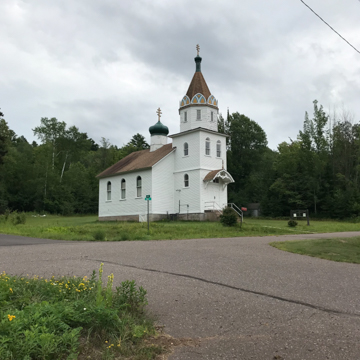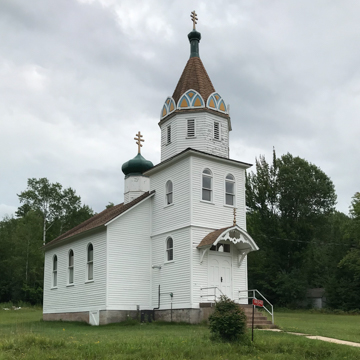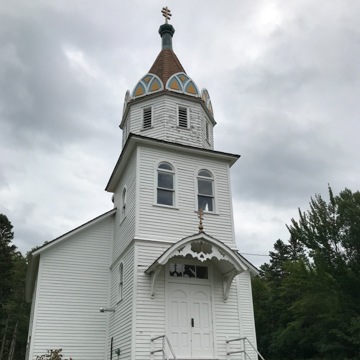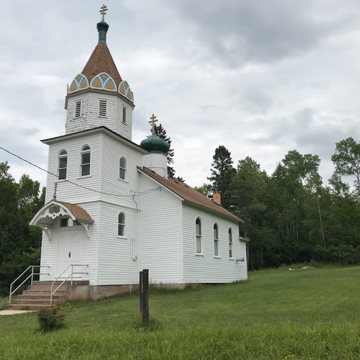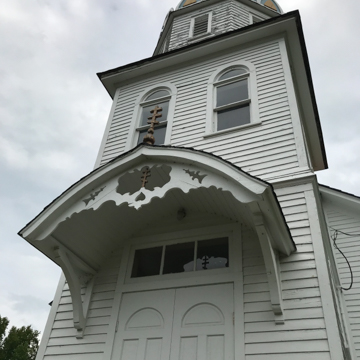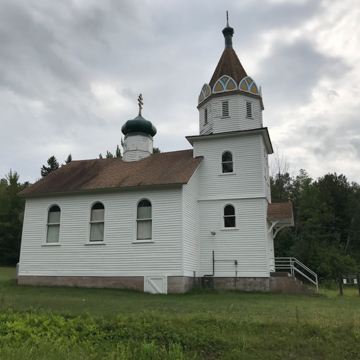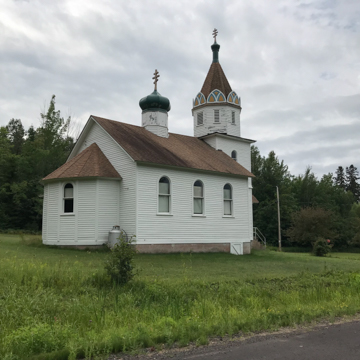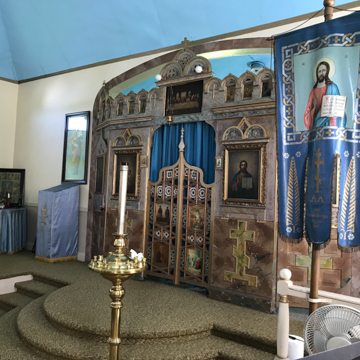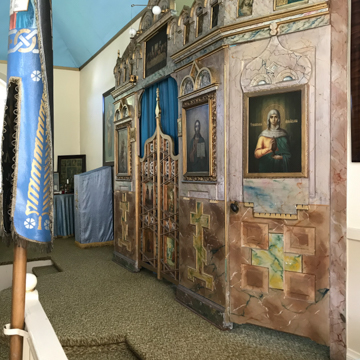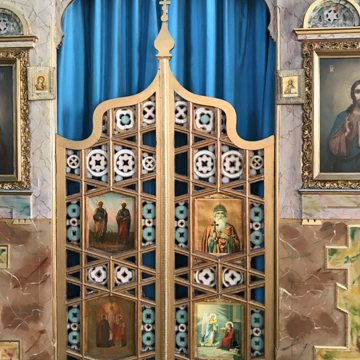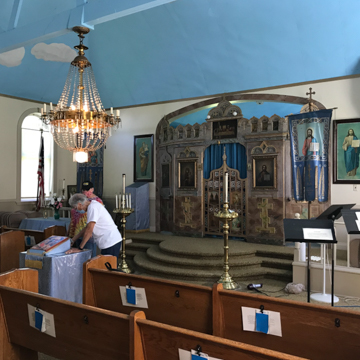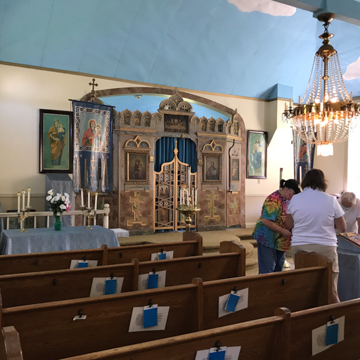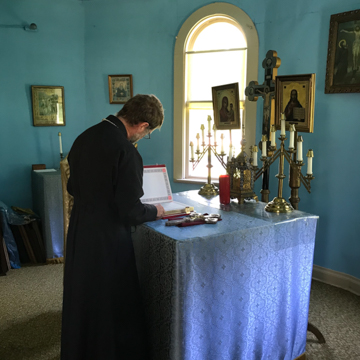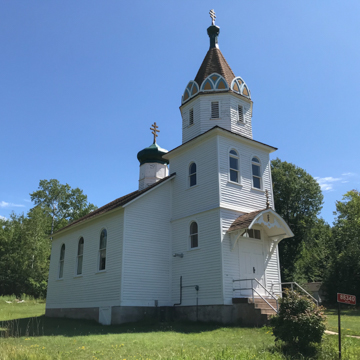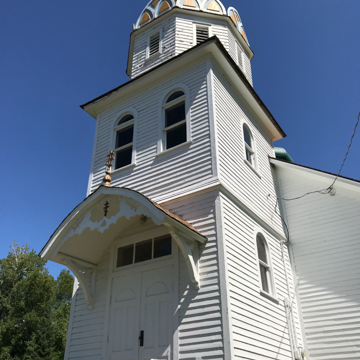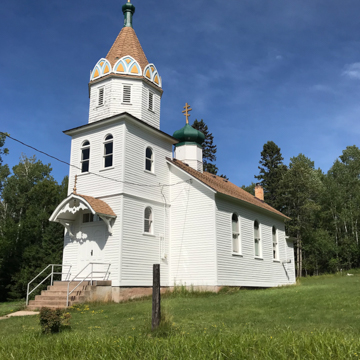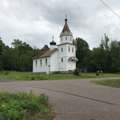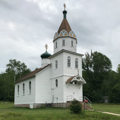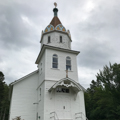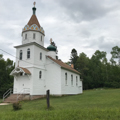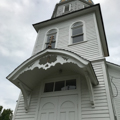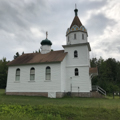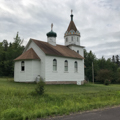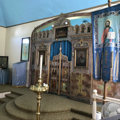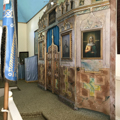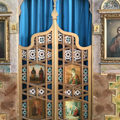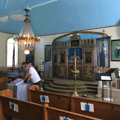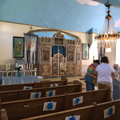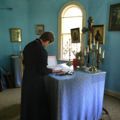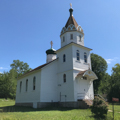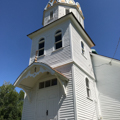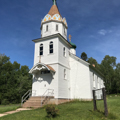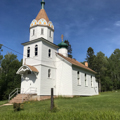This church is one of several Russian Orthodox churches in rural Wisconsin. The Russian Orthodox Church was established in North America in Russian-controlled Alaska in 1794. Until the 1880s, most Russian Orthodox Christians in North America were native Alaskans, but in the late nineteenth century many East Slavs migrated from Europe. Although they were not Russian, many of the immigrants joined the Russian Orthodox Church’s North American diocese, increasing its size and transforming its ethnic character. In 1970 this diocese became an independent Orthodox Church in America. Shortly after 1900, East Slav families from the Austro-Hungarian Empire and from Ukraine settled in Bayfield County to farm or work in the sawmills. The church they constructed is on the edge of the village, on elevated ground. The exterior, clad in white wooden clapboards, articulates its three-part plan of narthex, nave, and, at the east end, an eight-sided apse. The roof forms are the most striking exterior features and are distinctly Russian. The tower has a tent-shaped roof, known as a shaytor, surrounded by decorative wood panels, apparently suggesting external arches called kokoshniki. The kokoshniki are painted blue and gold, traditional colors for Russian Orthodox church roofs. At the top of the shaytor is a small onion-shaped cupola. A larger onion dome set on a cupola marks the center of the nave. Both domes are topped with gold three-bar Russian Orthodox crosses. The roofline of the entrance door’s hood employs a subtle reverse curve, another motif common in Russian architecture. The front of the door hood is enlivened by a flowing folk design of jigsaw work also incorporating a three-bar cross. A miniature onion dome crowns the top of the hood.
On the interior, a platform supports the iconostasis, separating the sanctuary from the nave. The iconostasis, pierced by paired royal doors at the center and one deacon door on each side, holds two tiers of icons. The nave was designed for the Orthodox tradition of standing for worship without pews. Today, however, pews fill the space beneath an azure blue ceiling accented with gold stars.
The church is connected by history and related in design to several other Orthodox churches in rural Wisconsin including Holy Trinity Orthodox Church (BN1), St. John the Baptist (1906) in the town of Colburn, Chippewa County, and Holy Assumption (c. 1908) in Lublin, Taylor County.


